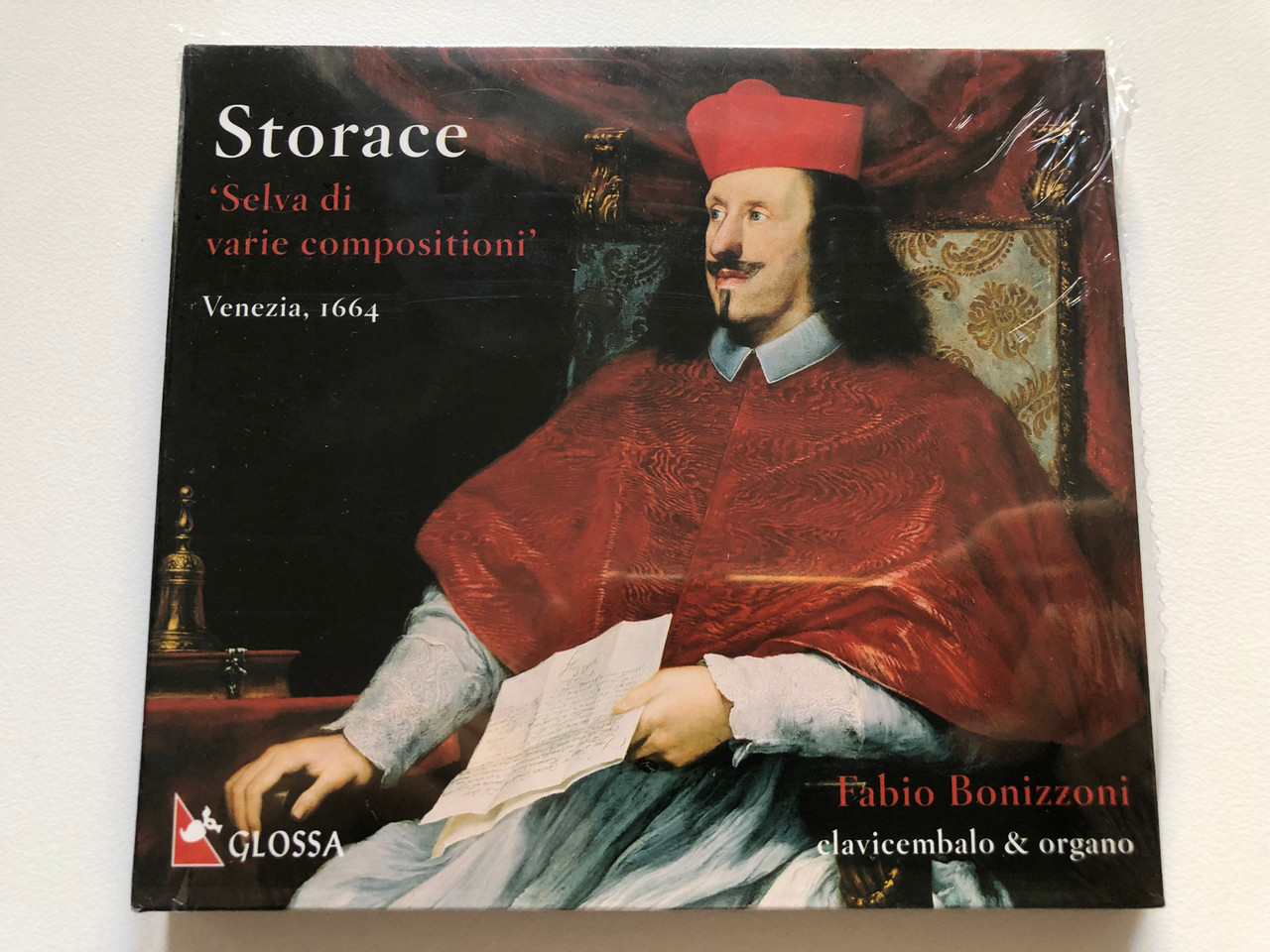Description
Fabio Bonizzoni – Storace 'Selva di varie compositioni' / Glossa Music S.L CD Audio 2003.
UPC 8424562215061
Made in EU
Fabio Bonizzoni’s attention on record to the music of Handel - which has, thus far, yielded seven discs devoted to the early Italian-texted cantatas - has just now had the good fortune to receive this year’s Stanley Sadie Handel Recording Prize for Apollo e Dafne, the final release in the present series for Glossa. This is the third time that Bonizzoni and his period-instrument ensemble La Risonanza have won this prestigious prize for their series of “Le Cantate Italiane di Handel” (previous winners were the first release, Le Cantate per il Cardinal Pamphili and the fifth, Clori, Tirsi e Fileno); three other recordings have also featured as runners-up.
Tracklist:
| 1 | Balletto | 2:09 | |
| 2 | Passagagli sopra Fe fa ut per b | 5:44 | |
| 3 | Ciaccona | 5:33 | |
| 4 | Corrente | 1:34 | |
| 5 | Ballo della Battaglia | 2:16 | |
| 6 | Romanesca | 6:49 | |
| 7 | Aria sopra la Spagnoletta | 7:17 | |
| 8 | Passagali sopra D sol re per # | 10:59 | |
| 9 | Corrente | 1:48 | |
| 10 | Recercar di legature | 4:15 | |
| 11 | Toccata & Canzon | 3:50 | |
| 12 | Pastorale | 11:05 | |
| 13 | Recercar | 6:27 | |
| 14 | Toccata & Canzon | 4:15 |
Harpsichord recorded at Conservatorio della Svizzera Italiana, Lugano, in February 2001
Organ recorded at Chiesa della Badia, Petralia Sottana, Sicily, in April 2001
Engineered by Edoardo Lambertenghi
Storace's main interest in Selva di varie compositioni is the variation form. Particularly notable are the four passacaglias, which contain, in total, 320 representations of the descending tetrachord. Two of these works are split into several sections connected by modulatory passages: Passagagli sopra D sol re per # contains four sections (D major, A major, E major, and B minor; a total of 91 variations) and Passagagli sopra Fe fa ut per b three (F minor, B-flat minor and E-flat major; a total of 72 variations). The single chaconne included in the collection also comprises variations on a four-bar pattern.
The rest of the variation sets tend to feature longer patterns, up to 24 bars in Aria sopra la Spagnoletta. The theme of the latter piece is, curiously, not related to Frescobaldi's Spagnoletta; it is only found in a 16th-century Florentine manuscript. Storace uses a transposed version of it and produces six variations with very brief connecting passages between them. A similar situation is observed in Partita sopra il Cinque passi: there are fifteen variations on a six-bar theme, connected by brief transitions, and the theme is again not related to the more well-known Cinquepassi of The Mulliner Book, or to cinquepassi as explained by Michael Praetorius in his writings. Storace's Follia uses the same theme as Frescobaldi's Follia, but neither is related to the famous La Folía. Finally, Storace's variations on the Passo e mezzo include one on the moderno variant of the theme and two on the antico; all three sets are examples of mixed variations, for they include sections marked gagliarda or corrente, i.e., dances.
Organ recorded at Chiesa della Badia, Petralia Sottana, Sicily, in April 2001
Engineered by Edoardo Lambertenghi
Storace's main interest in Selva di varie compositioni is the variation form. Particularly notable are the four passacaglias, which contain, in total, 320 representations of the descending tetrachord. Two of these works are split into several sections connected by modulatory passages: Passagagli sopra D sol re per # contains four sections (D major, A major, E major, and B minor; a total of 91 variations) and Passagagli sopra Fe fa ut per b three (F minor, B-flat minor and E-flat major; a total of 72 variations). The single chaconne included in the collection also comprises variations on a four-bar pattern.
The rest of the variation sets tend to feature longer patterns, up to 24 bars in Aria sopra la Spagnoletta. The theme of the latter piece is, curiously, not related to Frescobaldi's Spagnoletta; it is only found in a 16th-century Florentine manuscript. Storace uses a transposed version of it and produces six variations with very brief connecting passages between them. A similar situation is observed in Partita sopra il Cinque passi: there are fifteen variations on a six-bar theme, connected by brief transitions, and the theme is again not related to the more well-known Cinquepassi of The Mulliner Book, or to cinquepassi as explained by Michael Praetorius in his writings. Storace's Follia uses the same theme as Frescobaldi's Follia, but neither is related to the famous La Folía. Finally, Storace's variations on the Passo e mezzo include one on the moderno variant of the theme and two on the antico; all three sets are examples of mixed variations, for they include sections marked gagliarda or corrente, i.e., dances.
- Barcode: 8424562215061



























